Beijing is massive. Third largest city in the world kind of massive. So how do you fit all that you need to see in the ancient city, formerly known as Peking? Well, we hope that we’ve put together the perfect 4 day Beijing itinerary that will help you plan your trip; a complete guide to Beijing if you will. We’ve also included a bunch of useful information, travel tips and some handy recommendations to make sure you’re fully prepared for a trip to China, which isn’t always the easiest place to travel for foreigners.
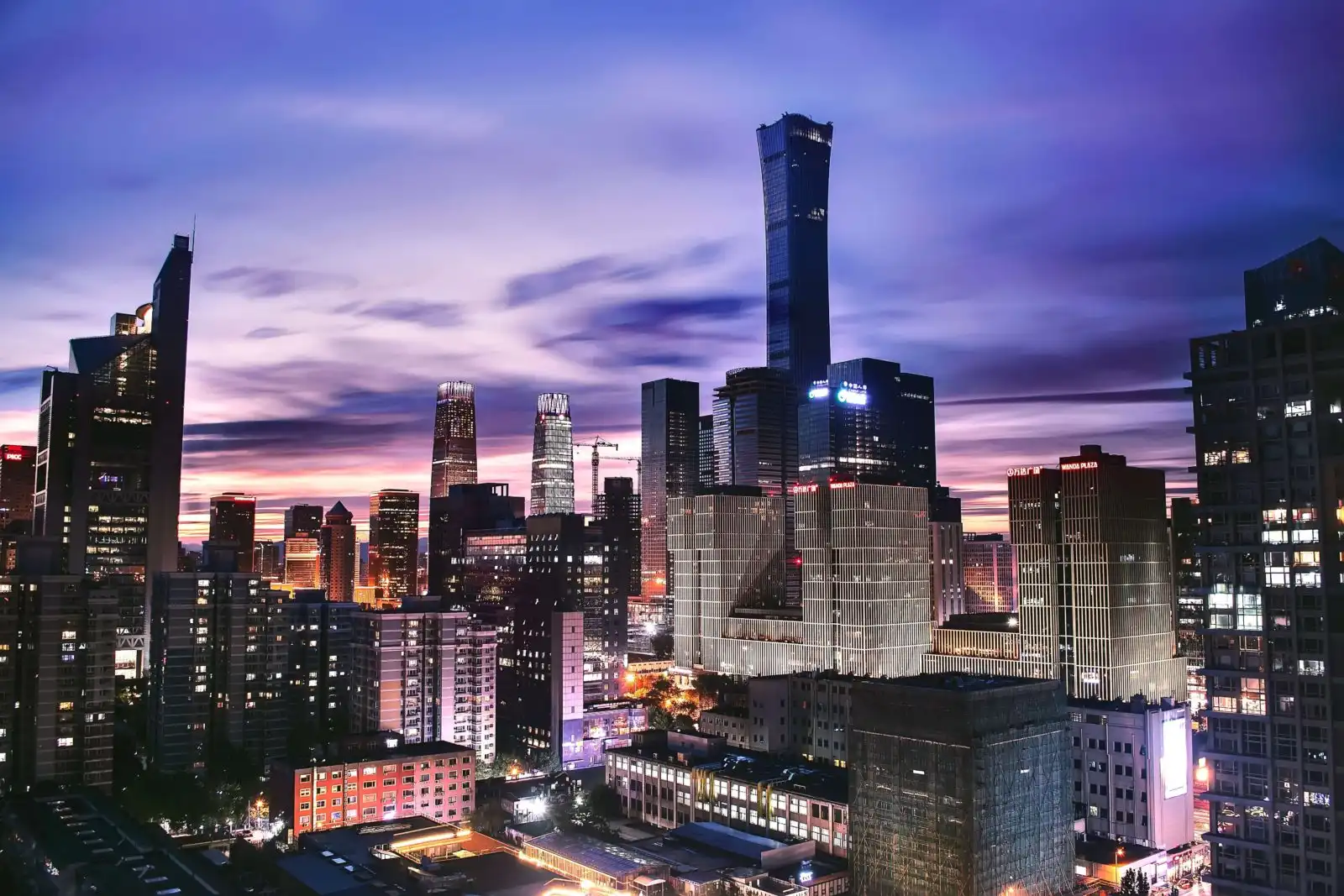
Skip ahead
Why go to Beijing?
When we decided to add China to our list of must go places on our world trip, there was a hint of trepidation and a touch of scepticism. We had heard from the few other travellers that China travel is challenging and to pretty much expect the worst. And based on our experiences, it made us question if they had actually been! It was not at all what we had been led to believe and with Beijing being the capital city, it makes it the perfect place to start a trip in China. So before we get into our Beijing itinerary here is why you should make Beijing a must stop destination.
- If you are looking to see some of the most famous sights in the world, then look no further then Beijing. The city is littered with iconic landmarks and Chinese culture.
- I’m pretty sure you’ll be a fan of Chinese food. Let’s be honest, who isn’t? So what better than to experience first-hand where Peking duck pancakes come from? And if you are interested in experiencing cuisine that you most likely won’t have ever tried before, then this is your place. Duck blood soup anyone? Go on, tantalise those taste buds with some strange foods in China!
- We were a little concerned that getting around Beijing wouldn’t be that easy. How wrong we were! One of the best Metro systems in the world, it is cheap, clean and efficient. Plus all the ticket machines and stations are in English.
- If I’m comparing the cost for accommodation, food and travel to any other major city in the world, then your money goes pretty far. Don’t expect South East Asia prices, but it’s not wildly off. You can easily stay very comfortably on a 100 GBP / 120 USD a day budget.
- Now one thing we found we actually loved was the language barrier. Yes, there definitely is one. English isn’t widely spoken. But it makes you feel like you’ve really achieved something when you manage to order the correct dinner or find your way to the right place. It’s almost taking you back to the days of romantic travel, when you just had to get by. And let’s be honest, if all else fails – Google Translate.
- The local people are lovely and we found them to be super helpful. We won’t forget the time we tried to purchase a new phone, and were using Google translate to chat through with the sales assistant. And without any hesitation another customer who spoke fluent English came and helped us out.
Read next: Here is the perfect 2 week China itinerary.
Our Beijing itinerary for 4 days
- Day 1 – Forbidden City | Jingshan Park | Tiananmen Square | Qianmen Walking Street
- Day 2 – Summer Palace | Temple of Heaven
- Day 3 – Day trip to the Great Wall of China
- Day 4 – Ming Dynasty Tombs | Lama Temple | Hutongs | Ghost Street
How long should you stay in Beijing?
There is so much to do in Beijing that you could easily stay in the city for more than a week seeing the sights (there are 7 UNESCO World Heritage sites alone), hitting the hutongs, trying some of the 12,000+ restaurants and even shopping till you drop. But we would recommend spending 4 days exploring the city. And hopefully we have the perfect Beijing tour itinerary below.
We actually spent 5 days in Beijing, but as part of a longer one month trip, and so split this into two and three days with a trip to the Great Wall of China bang in the middle. We didn’t go there, but many people also travel from Beijing to neighbouring Mongolia.
Read next: The ideal Xian city guide.
Travel Insurance for China
Got your travel insurance booked? We promise to never push a brand or product we don’t personally use, and the travel cover from Safety Wing is a policy we don’t just use, but we highly recommend. They offer some of the most flexible policies, amazing customer service and are affordable too.
Check out the latest travel insurance prices with Safety Wing here.
Day 1 Beijing Itinerary – Exploring the most famous sites
Forbidden City
So, what to do in Beijing? We are kicking off the itinerary with the big one: The Forbidden City. This has to be one of the most impressive city or palace complexes that we have ever seen. There are over 1.8 million pieces of artwork, over 8,500 rooms across 900 odd buildings. So you need to leave yourself a good couple of hours to explore. We’d suggest you wear comfy shoes as the complex is almost a square kilometre!
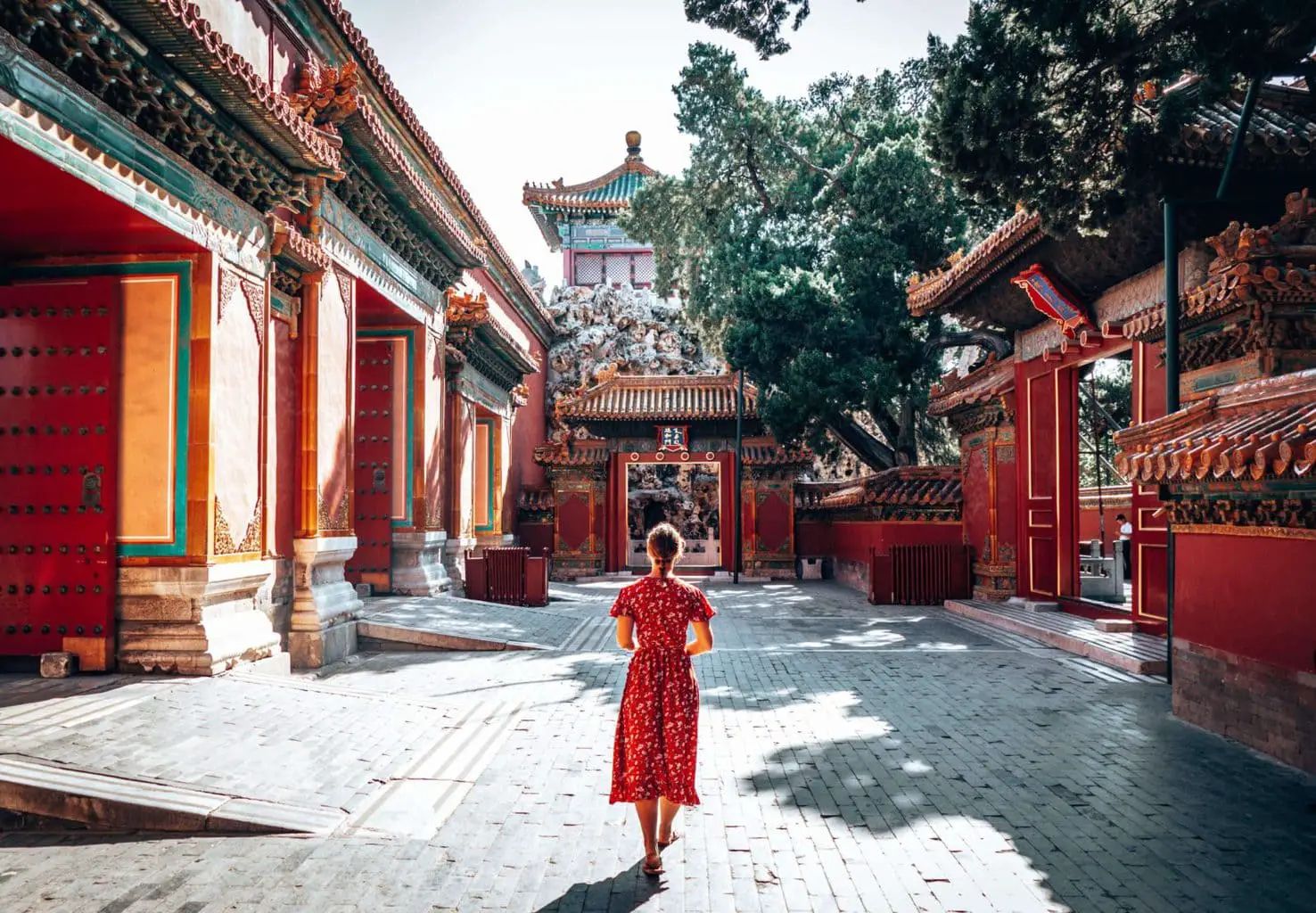
Make sure you book your ticket online beforehand. You’ll have to use a third party as you need to have a Chinese mobile number, ID and understand Mandarin to book directly!
We booked our Forbidden City Tickets here, which was seamless. Cost for entrance was 65 RMB (9 USD/7.50 GBP) Don’t forget to take your passport with you, you need it to get in.
There are also some good walking tour options, with the added benefit of understanding more of the history about the Forbidden City from your tour guide.
If you are taking the Metro, get off at either of the Tiananmen Square stations on line 1 (red line).
Top tip: If you are keen Instagrammers or photographers, then our best advice is get to the city entrance before 8.00am, enter over the bridge and wait around for 30 minutes until the ticket booths open. Then as soon as you are in, head to the left of all the crowds and walk quickly through the first couple of buildings. Miss them out for now – you can head back to them later. You’ll almost be doing the route in ‘reverse’. They limit ticket numbers to 80,000 per day, so there are only certain times/places where you can have it all to yourself. But it is so worth it!
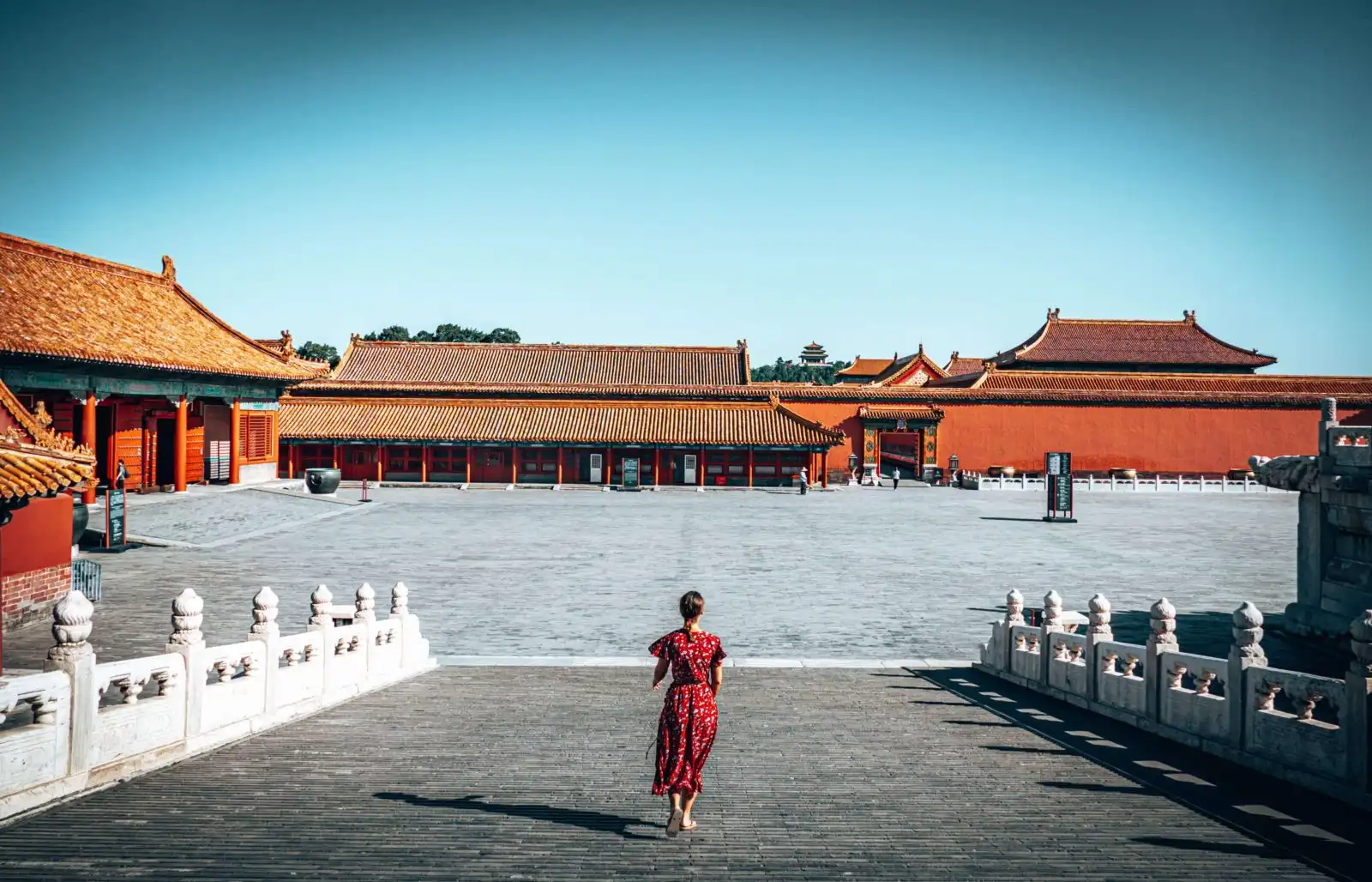
Location: 4 Jingshan Front St, Dongcheng Qu, Beijing
Open: 8.30am to 5.00pm (April to October) and 8.30am to 4.30pm (November to March) – Closed on Mondays!
Jingshan Park
You’ll have to exit the Forbidden City on the opposite side to where you entered. Which is great, as right across the road from this exit is Jingshan Park. One of the must do things in Beijing is to take a short walk up Prospect Hill, you’ll be afforded the best view back down over the Forbidden City, as well as a 360 degree view of the whole city. It’s a great way to understand the size and scale of Beijing.
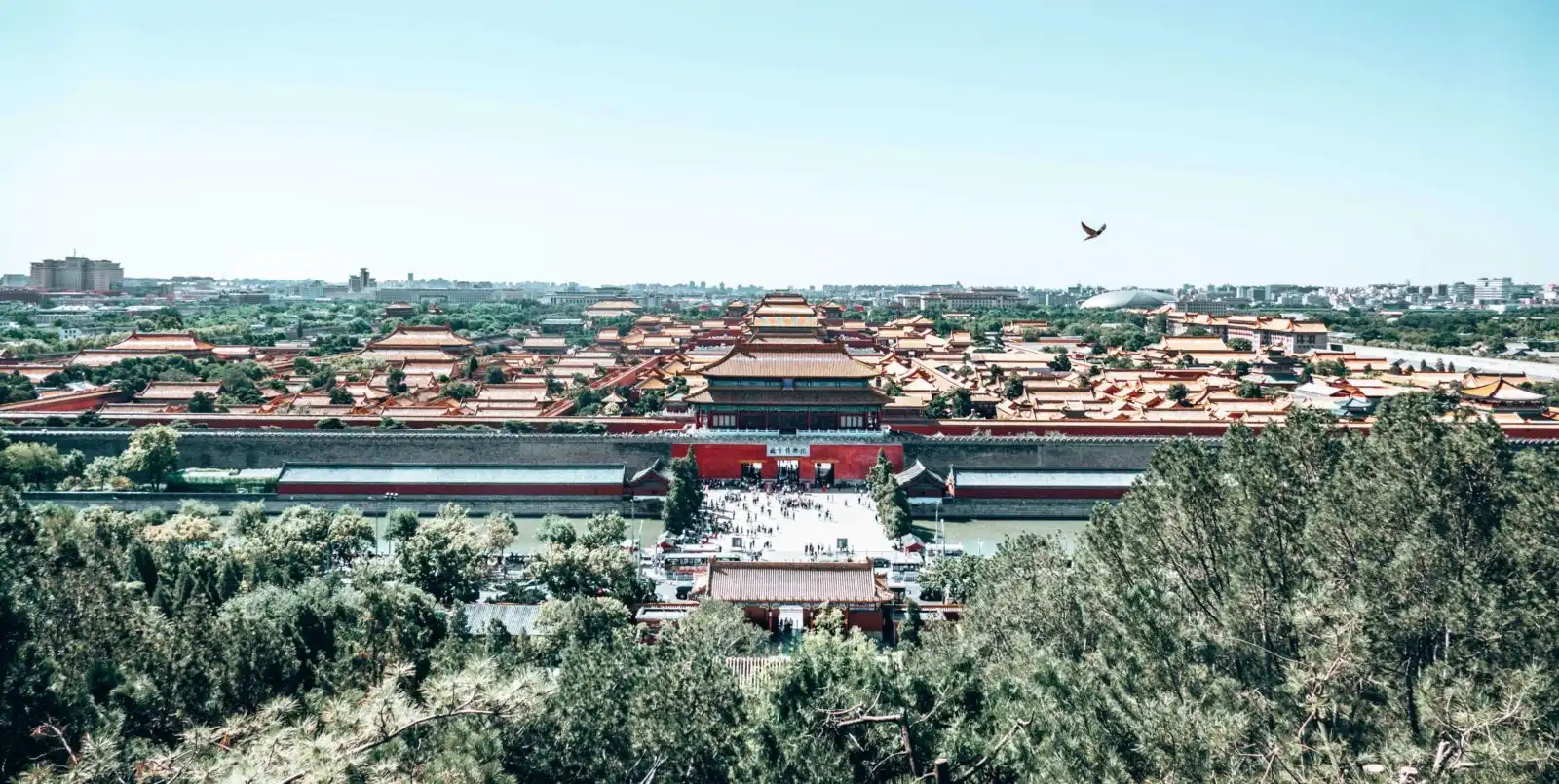
It’s only 2 RMB to enter (about 0.30 USD/0.25 GBP), so cheap as chips. It’s also open from early morning, so if you’re looking to get some shots of the Forbidden City in the morning, then it may be good to start your day with Jingshan Park.
Location: 44 Jingshan W St, Xicheng Qu, Beijing
Open: 6.00am to 10.00pm
Tiananmen Square
After heading back down Prospect Hill, it’s then worth heading back along the walls of the Forbidden City (around the outside) towards Tiananmen Square. As you may have gathered, China doesn’t do small, and this square is no exception, being one of the top 10 largest city squares in the world. The square is really impressive, obviously overlooking the Forbidden City, but also the location of the Monument to the People’s Heroes, the Great Hall of the People, the National Museum of China and the Mausoleum of Mao Zedong.
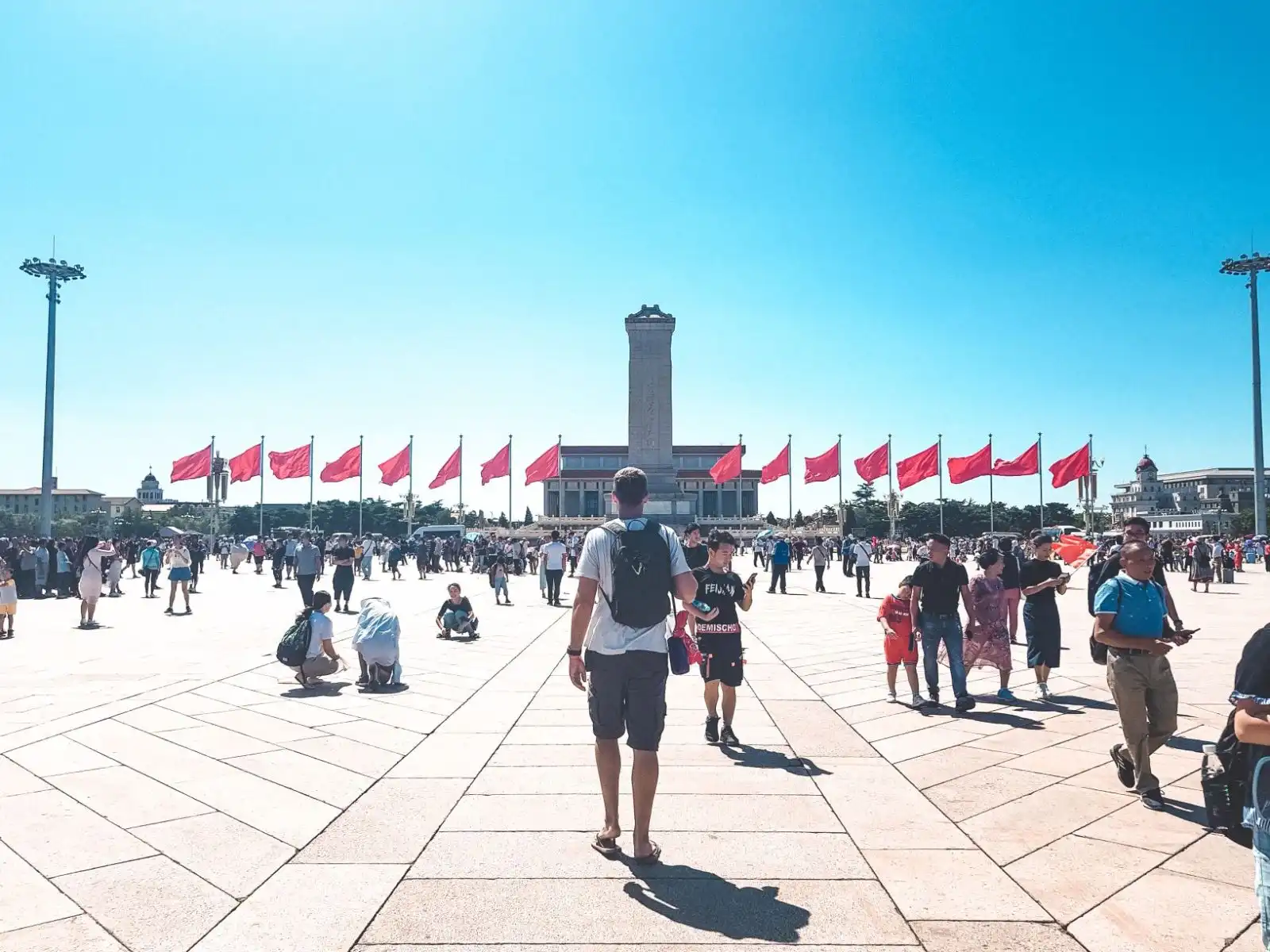
You may be pretty knackered after all the walking and not have the energy for exploring these other sites, but we just enjoyed walking around the square. Don’t forget that you’ll also need your passport to enter into Tiananmen Square!
Location: Tiananmen Square
Open: Times vary, but even though it is closed at night, you can still walk around it.
Qianmen walking street
If you continue heading south when you depart Tiananmen Square, you will eventually hit Qianmen walking street, which is a great place to rest up and grab some food or coffee. The area was redeveloped to look as it did in the 1920’s and has a number of courtyards and hutongs to explore – quite touristy, but a great area to wander.
Location: Qianmen Street, Dongcheng, Beijing
Day 2 Beijing Itinerary – Summer Palace & Temple of Heaven
Summer Palace
For the morning of Day 2 of your Beijing itinerary, we recommend heading to the UNESCO World Heritage site of the Summer Palace, the imperial gardens and palaces from the Qing Dynasty. The near 3 square kilometre park is centred around Longevity Hill and Kunming Lake. The Summer Palace is really accessible from the city, all you have to do is take Line 4 north to Xiyuan or Beigongmen Stations. The cost for the gardens is 30 RMB (4 USD/3.50 GBP) during summer months (April to October) and 20 RMB (2.75 USD/2.25 GBP) for the rest. There are several add on costs for access to different areas, but you can also purchase a combo ticket for 60 RMB/50 RMB (8.25/7.00 USD or 7.00/5.75 GBP) depending on the time of year.
If you’d like to take a guided tour why not try this one (makes it all a little easier).
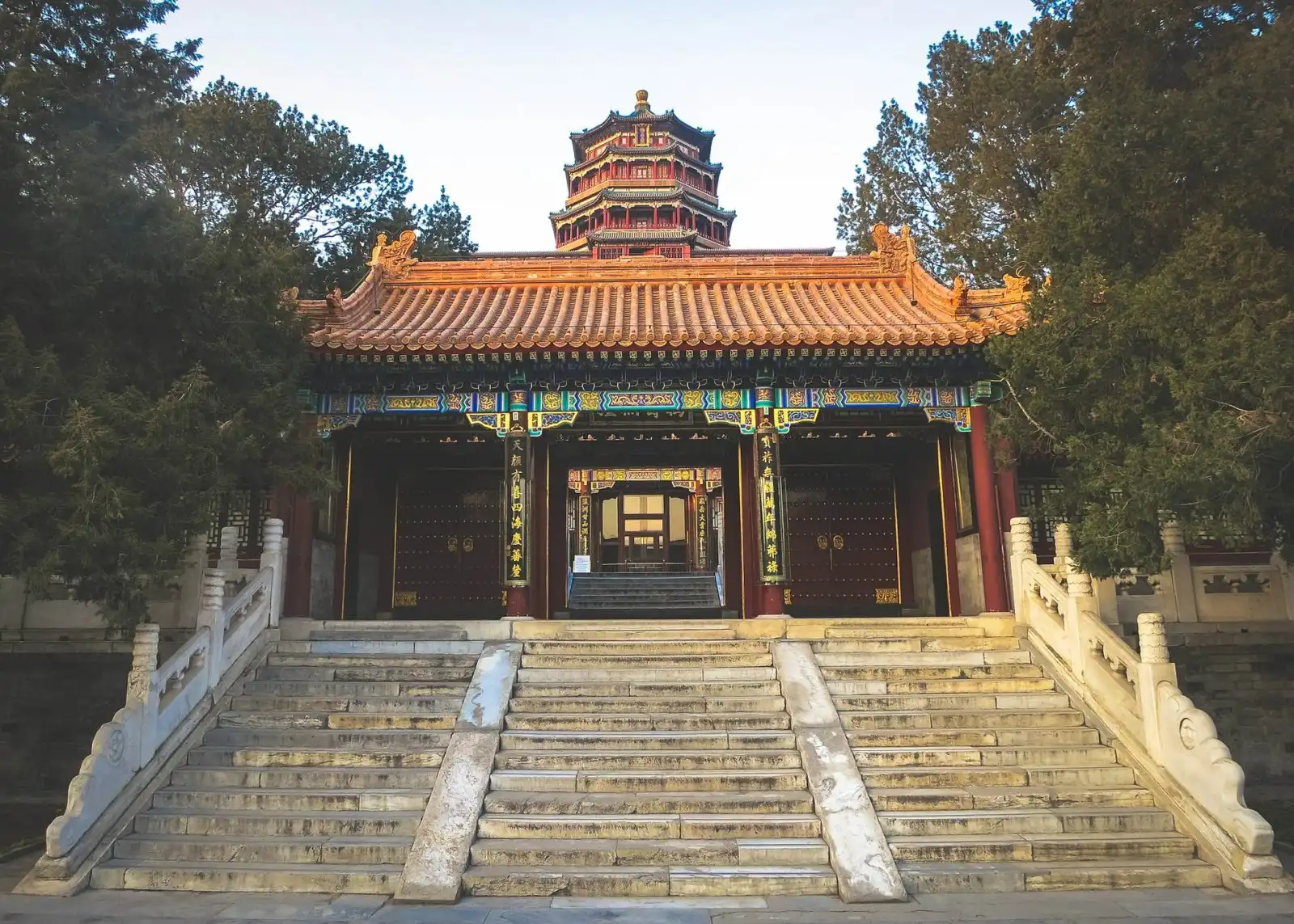
Location: 19 Xinjiangongmen Rd, Haidian Qu
Open: April to October – 6.30am to 6.00pm and November to March – 7.00am to 5.00pm
Temple of Heaven
After some well-deserved lunch (you will have done a lot of walking in the morning), jump back on Line 4, change at Xidan onto Line 1 (red) and 4 stops later at Jianguomen change onto line 5 (purple) getting off at Tiantan East Gate. As here is the location of your afternoon attraction, the Temple of Heaven.
Book your tickets for the Temple of Heaven here.
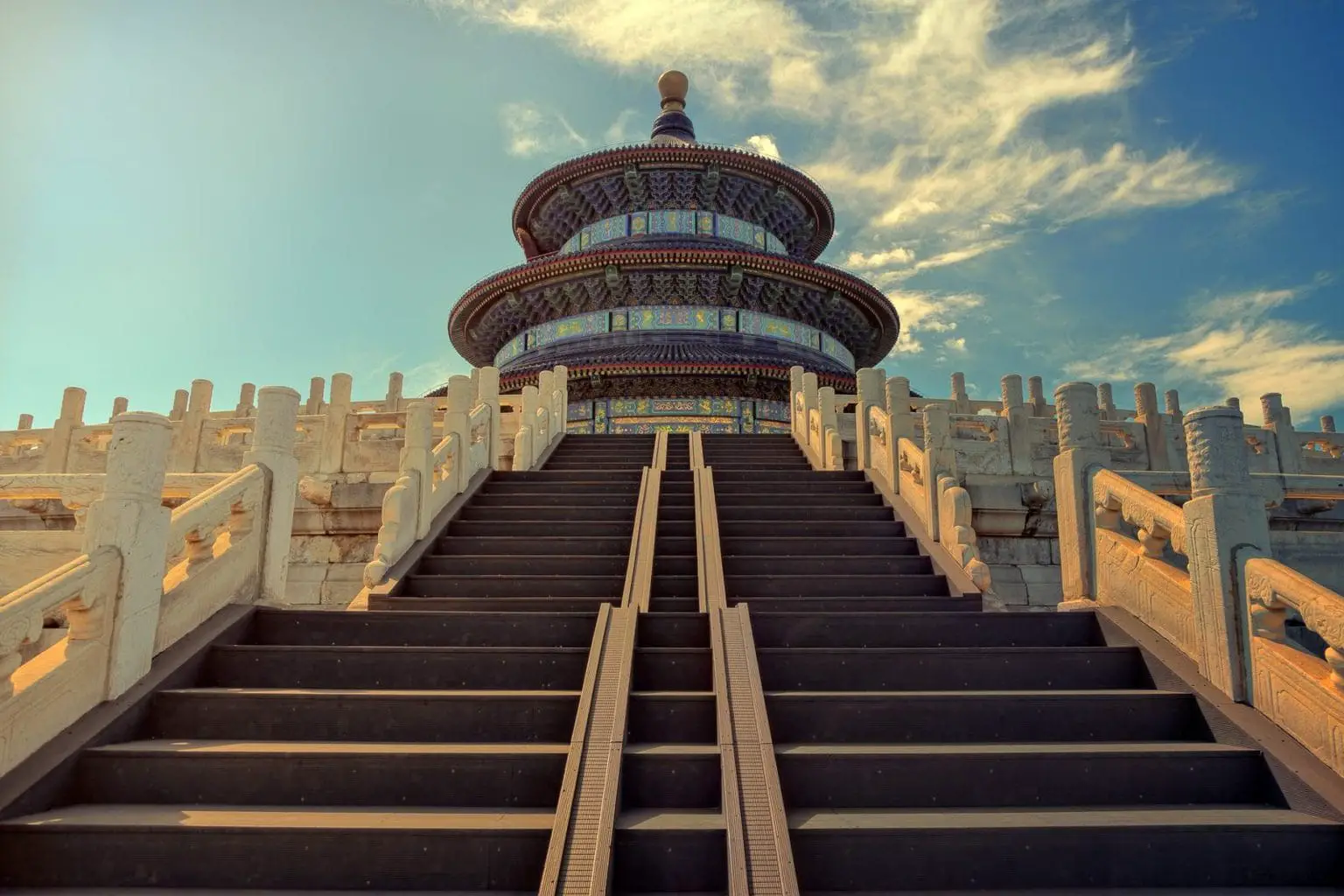
The temple complex, constructed in the early 1400s, was where emperors from the Ming and Qing Dynasties held their Heaven Worship ceremonies. It was enlarged over time and opened to the public as a park in 1988. The temple grounds cover nearly 3 kilometres and has three main areas: the Hall of Prayer for Good Harvests, a beautiful circular building that stands 38m tall; the Imperial Vault of Heaven which is a smaller version and the Circular Mound Altar, which boasts incredibly sculpted dragons.
Note: Like the Forbidden City, it can get quite busy so do be prepared for crowds, but it’s well worth the visit. As with other attractions in China, make sure you have your passport handy. Actually, it’s worth carrying it at all times.
Location: 1 Tiantan E Rd, Dongcheng Qu, Beijing
Open: 6.00am to 8.00pm daily
Day 3 Beijing Itinerary – Day trip to the Great Wall of China
Simatai
The most impressive manmade thing that we have ever seen. The Great Wall of China is one of the 7 wonders of the world and when you get to see it first hand, you understand why. The wall just goes on and on – in total there is over 21,000km of wall. That’s over half the circumference of earth! It’s an incredible feat of building/engineering given that parts of it were started over 2000 years ago. And you really can’t come to Beijing without spending at least one day visiting it.
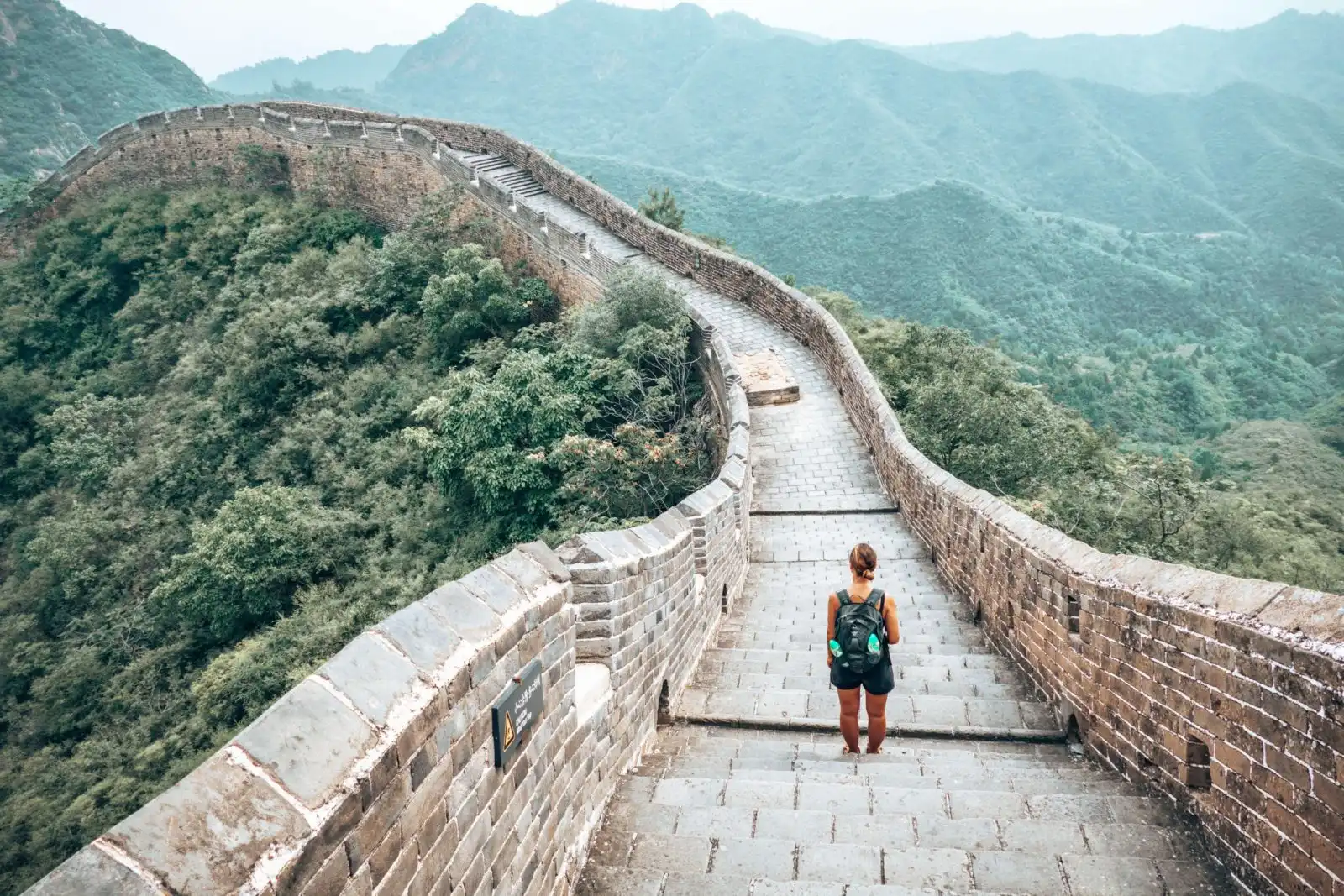
If you can only afford to spend one day on the wall as part of the Beijing itinerary, then we would suggest heading out to Simatai, via the Gubei Water Town bus and taking the cable car up to the wall. You could also head to Badaling or Mutianyu sections as part of a Great Wall Tour as these are closer to the city but, of course, busier.
Cost for entry to Simatai is 40 RMB (5.50 USD/4.50 GBP), if you take the cable car it’s 180 RMB/110 RMB, either both ways or one way (25/15 USD or 20/12.50 GBP). Entrance to the Water Town is 150 RMB (20 USD/17 GBP). A number of combo tickets are also available.
How to get to Simitai/Gubei Water Town:
Head to Dongzhimen station (Line 2 & 13), exit via B1 and then walk to the bus departure area.
Note that this is not actually at the bus station but around the corner. You’ll find a host of parked buses, and just jump onto one that has Water Town marked on the front. You only pay for your ticket when on your way and should cost 48 RMB (6.75 USD/5.50 GBP) a person.
Departures to Gubei Water Town: 9.00am, 12.00pm & 3.30pm (although good to note that they depart whenever they are full – our midday bus departed at 11am)
Return to Beijing departures: 1.00pm, 4.00pm & 9.00pm
Gubeikou & Jinshanling
However, you could definitely make this a standalone trip of its own rather than part of your Beijing itinerary, if you have more time. We were lucky enough to spend a couple of days at the Great Wall of China – and if you are a keen hiker, we highly recommend walking from Gubeikou, an unrestored section of the wall, through to Jinshanling an area which has been restored. During our time walking along the wall at Gubeikou we encountered two other families – it is deserted. Jinshanling is a little busier but still not the crazy crowds that you can experience elsewhere on the wall.
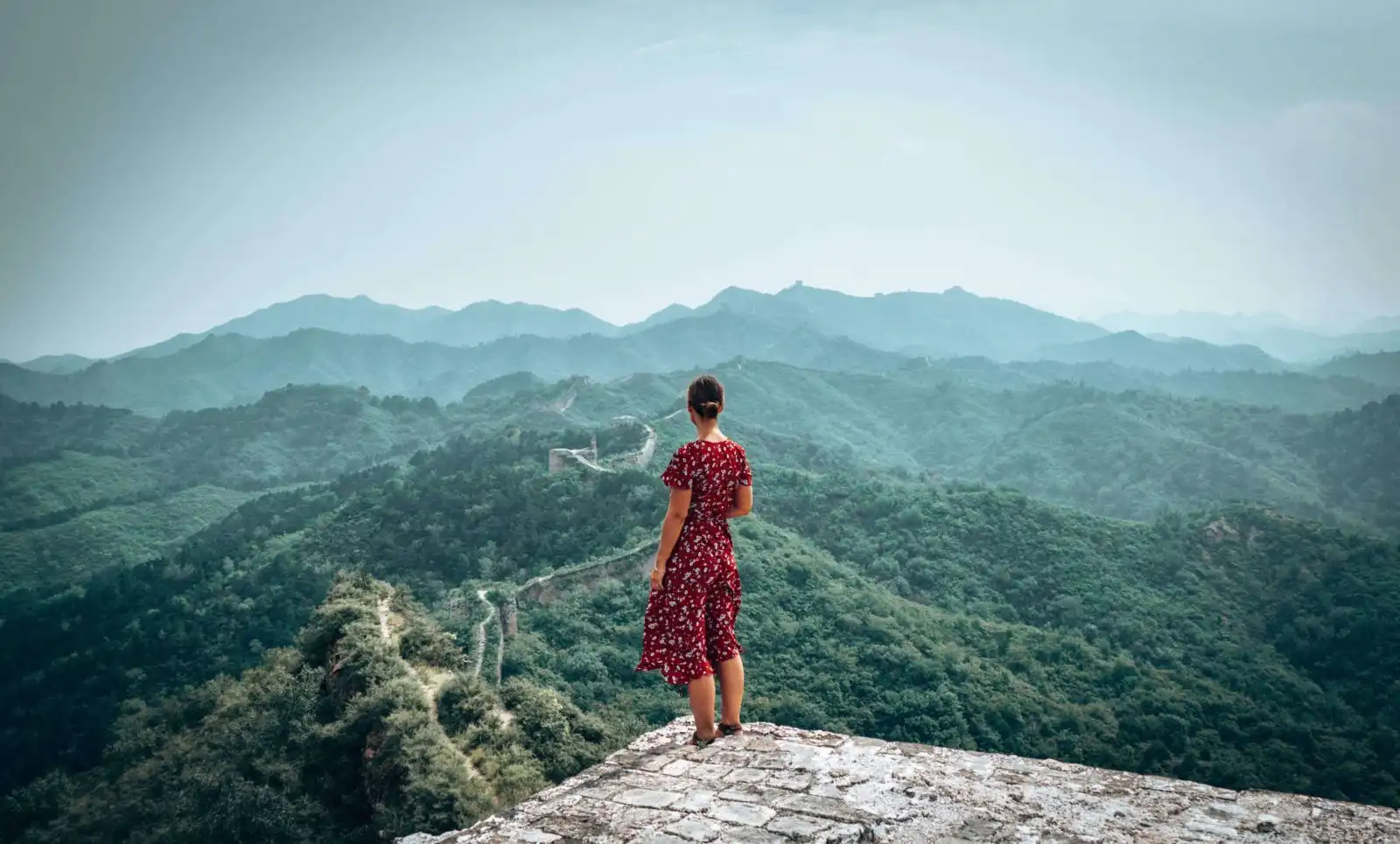
This hike takes around 6 – 8 hours depending on your speed, and getting from the end of Gubeikou to Jinshanling you have to head off the wall and walk around a large military zone. Although not very clearly marked, just follow the red marks on the rocks and you can’t get lost.
The cost for entrance at Gubeikou is 25 RMB (3.50 USD/2.80 GBP) and Jinshanling is 65 RMB per person (9 USD/7.50 GBP). Although the cost of Jinshanling is a little more, it is really worth going…
There is also an option to do a day tour to Jinshanling on its own, which would also be a great alternative.
Getting to Gubeikou/back from Jinshanling:
Exactly the same way as heading to Simitai, but at Gubei Water Town jump in a taxi which takes about 20 minutes and should cost 80 RMB (11 USD/9.20 GBP).
Accommodation option:
If you decide to stay longer at the Great Wall, we’d recommend basing yourself in Gubeikou at the Great Wall Box House. It’s a great hostel, food is good, is located about 5 minutes walk from the gate at Gubeikou and if you love cats, they have about 15!
Day 4 Beijing Itinerary – Tombs and Temples
Ming Dynasty Tombs
The thirteen tombs of the Ming Dynasty are a short day trip from Beijing (around 50km), and the best way to start off your last day of your Beijing itinerary. You’ll either need to take a private car or a bus, and then walk around the massive area that houses the thirteen emperors of the Ming Dynasty, which ran between 1368 and 1644. It’s a huge area so either choose a guide or pick a few of the Ming tombs, else you’ll be there all day!
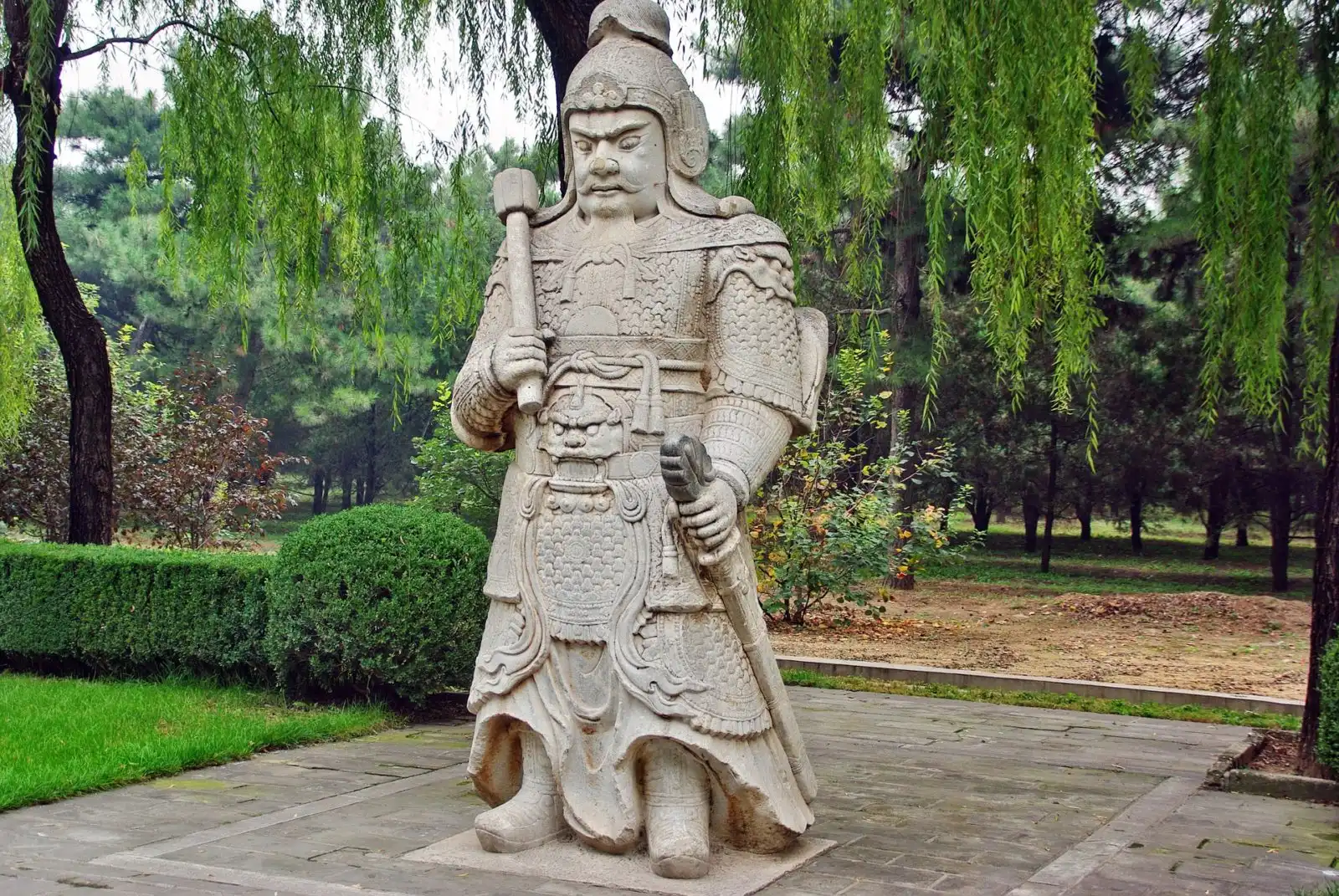
Lama Temple
A temple of many names – Lama, Yonghe, Harmony and Peace Palace – this temple in the north of Beijing is one of the most beautiful lamaseries (monastery for buddhist teachers) in all of China, and a great place to visit in Beijing. It was built in 1694 as the residence of Emperor Yongzheng but later became a lamasery in 1744, which it still operates as today.
This is a great stop after the tombs to take in a bit of peace and quiet, punctuated by the sound of monks and the smell of burning incense.
Round the corner is also the Confucius Temple, if you’re keen to see another temple in the area – it’s the second largest Confucius temple in the country.
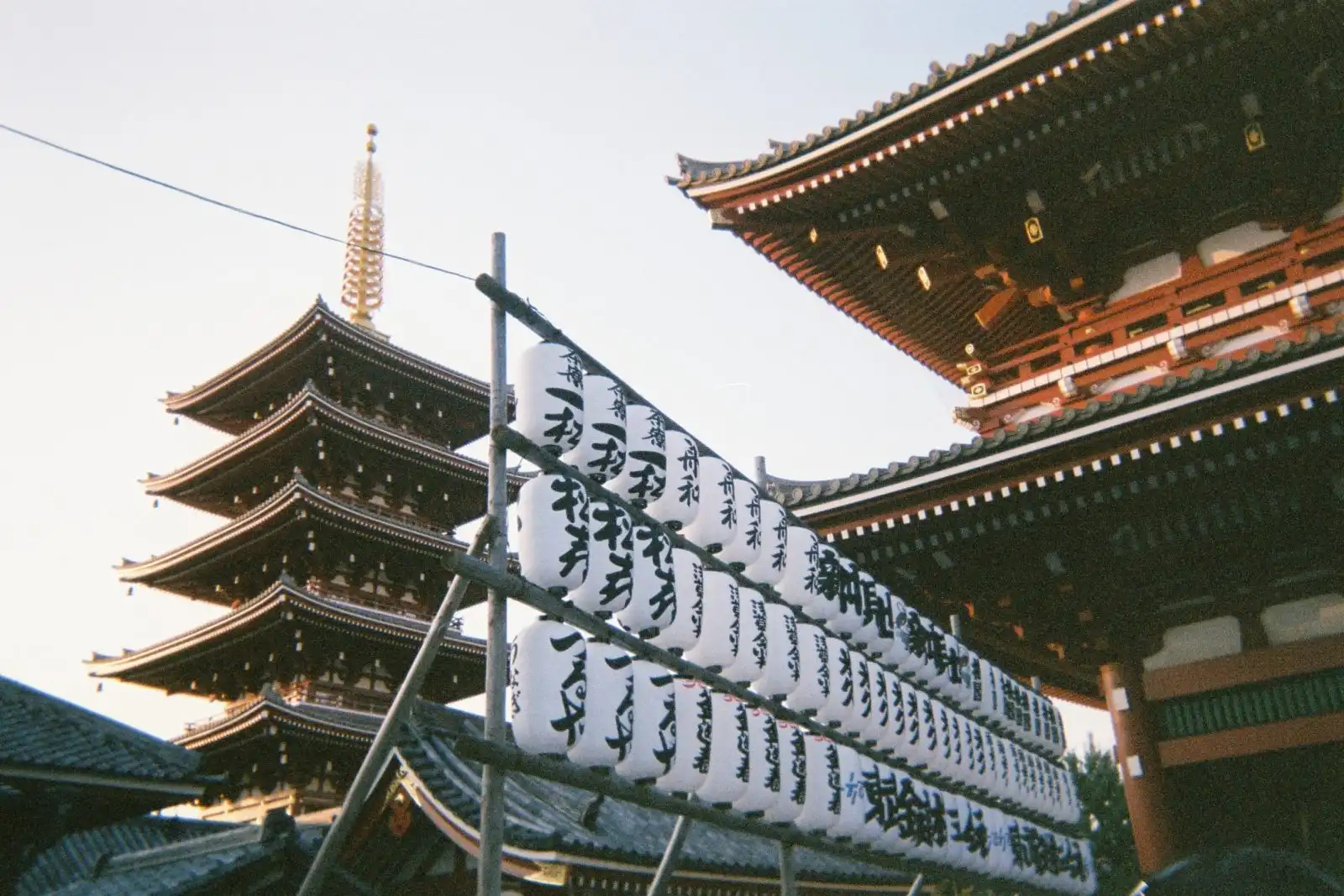
Location: 12 Yonghegong St, Dongcheng Qu, China, 100007
Open: 9.00am – 5.00pm daily
Wandering the hutongs
Loosely known as ‘neighbourhoods’ but technically a narrow street or alley, a ‘hutong’ is the best way to see real Chinese life in action, forming the heart of Beijing. Take your time walking through some of the more famous ones, or even rent a bicycle and cycle through them.
We suggest enjoying the hutongs near the Lama temple in the Yonghegong area, like Andingmen Xi Jie and Cangjinguan, and ending up at Ghost street.
Ghost Street (Gui Jie street)
The epicentre of Beijing’s food scene, this street has literally hundreds of restaurants dotted on either side, many of them open 24 hours. It’s not a street food alley; more geared towards traditional restaurants selling everything from sizzling hotpot to the renowned Peking Duck. It’s also known for it’s spicy crayfish dishes and even bullfrogs! Our pick is Xiaolin Hotpot but just wander up and down and look out for the busier restaurants; you can’t go wrong.
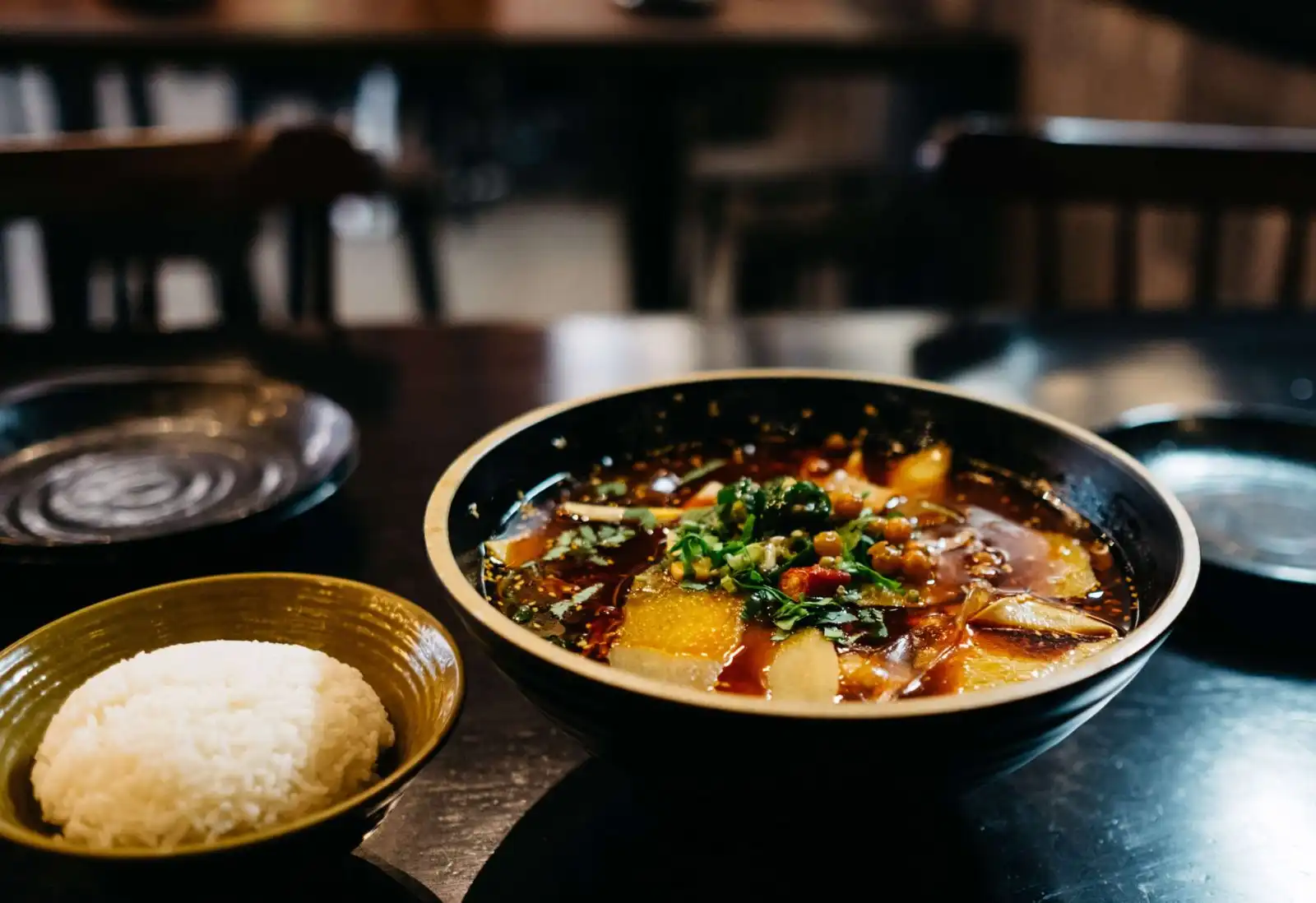
The street has nothing to do with ghouls by the way – it used to be home to coffin stores and the English name seems to have stuck around…
So those are our recommendations for your 4 days in Beijing itinerary, but let us know below in the comments if there are any other must see attractions that we have missed! And we’ve also been asked what if you only have one day in Beijing? Well just use our Day 1 itinerary and, if you still have the energy, head to the hutongs and Ghost Street for a well-deserved dinner!
Bonus – more things to see in Beijing
Need some more things to do in Beijing? Perhaps you have a 5 day Beijing itinerary to fill? Here are a few other options to add to your Beijing trip:
Olympic Park – National Stadium
A leftover from the Beijing 2008 Olympic games, the Olympic Park is more than just one stadium. In fact it’s an enormous area covering more than 200, 000 square metres and includes three areas: the Northern, Central and Southern regions. Most interesting is the ‘Birds Nest’, the gorgeous national stadium that is the main attraction in the Central region.
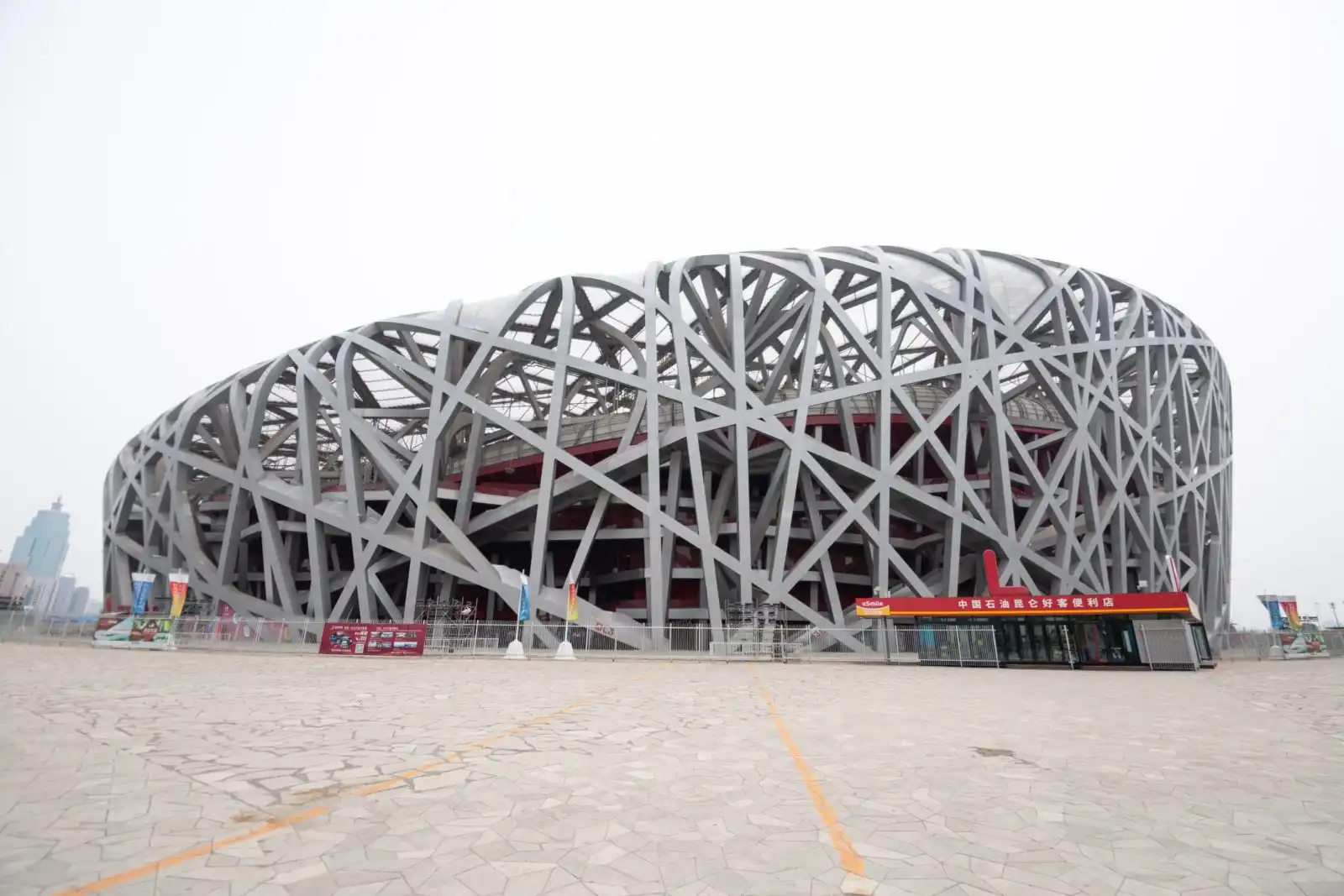
Location: 1 National Stadium S Rd, Chaoyang Qu, China
Open: 9.00am – 7.00pm daily
National Museum of China
So if you have the time when you’re done waking around Tiananmen Square, you could also head into the National Museum of China. It’s hugely impressive. In fact, did you know that it’s the second most visited art museum in the world, after Le Louvre in Paris, France?
It’s also massive. 65,000 square metres of art means you really need to pick your galleries, using the handy map you can pick up when you arrive.
Location: 16 E Chang’an Ave, Dongcheng Qu, China
Open: 9.00am – 4.30pm, closed on Mondays
Shopping – Wangfujing
Still lusting after a handbag or an authentic Chinese brand? Look no further than this bustling area which is the largest commercial shopping area in Beijing, only rivalled by the mega malls in Shanghai. Flanked by brands like Apple, Prada and Zara, you’ll find modern Western and Chinese department stores as well as international fast food chains like Mcdonalds and KFC rubbing shoulders with local food stores. This pedestrianized street also has a ‘snack street’ alongside it where you’ll find heaps of authentic Chinese stalls selling weird and wonderful foodstuffs, great as a night market if you’re keen to eat in the evening.
798 Art District
This district, known locally as Dashanzi, is home to some trendy creative spaces all housed in former military factories. You can browse around and find both new and established Chinese artists, peppered with funky boutiques, cool fashion and, of course, delicious coffee.
What’s the best place to stay in Beijing?
Luxury: Want to see the Forbidden City from above? You’ll get a killer view at the PuXuan Hotel and Spa, a gorgeous luxury hotel Beijing. It’s a stone’s throw from the Forbidden City and of course then the other sights of Tiananmen Square and the National Museum.
Mid-range: We stayed at the Park Plaza Science Park, and absolutely loved it. It’s quite affordable for this chain of hotels, has wonderful staff, a great gym and while the rooms might be a little dated, it’s got a great location and atmosphere.
Budget: Most backpackers and budgeteers choose the Peking Yard Hostel. It’s quite sociable, has great areas to relax, has wonderful activities like dumpling parties and the restaurant food is pretty good too.
Looking for more options on where to stay in Beijing? Try this list with choices for every budget.
When is the best time to go to Beijing?
The best times to visit Beijing are between March to May and September to October. The weather during that time will be cooler than June to August. And summer holidays in July & August can make some of the attractions unbearably busy! From November to February it’s winter, which obviously brings much colder weather.
Getting from Beijing International airport
So we’re assuming that you’re likely to be flying into Beijing International Airport – but just in case you haven’t yet booked your flights, check out the latest deals to Beijing on Skyscanner.
By Train: Departing from both Terminal 2 & 3 the Beijing Airport Express Train is a really great option. The trains depart every 10 minutes and it takes about 20-30 minutes and arrives into Dongzhimen station, where you can transfer onto Metro lines 2 and 13. The cost for the train is 25 RMB (3.50 USD/2.85 GBP).
By Taxi: Make sure that you head to the taxi rank outside the airport – anyone approaching you in the arrival hall will be looking to inflate prices! Ensure that you agree up front for the taxi driver to use the meter (this is where a translation app comes in very handy). The journey into the city centre should take around an hour, traffic depending, and will cost around 200-250 RMB (28-35 USD/23-28.75 GBP). So definitely the more expensive option!
Using the Beijing Metro
The Beijing Metro is the best way to get around the city. It is clean, efficient and cheap. A ticket anywhere on the metro will cost you no more than 5 RMB (0.70 USD/0.55 GBP). It’s really easy to use, but we’d recommend downloading the Metro Man app (Google/Apple), which is in English and gives you journey options and times along with access to maps.
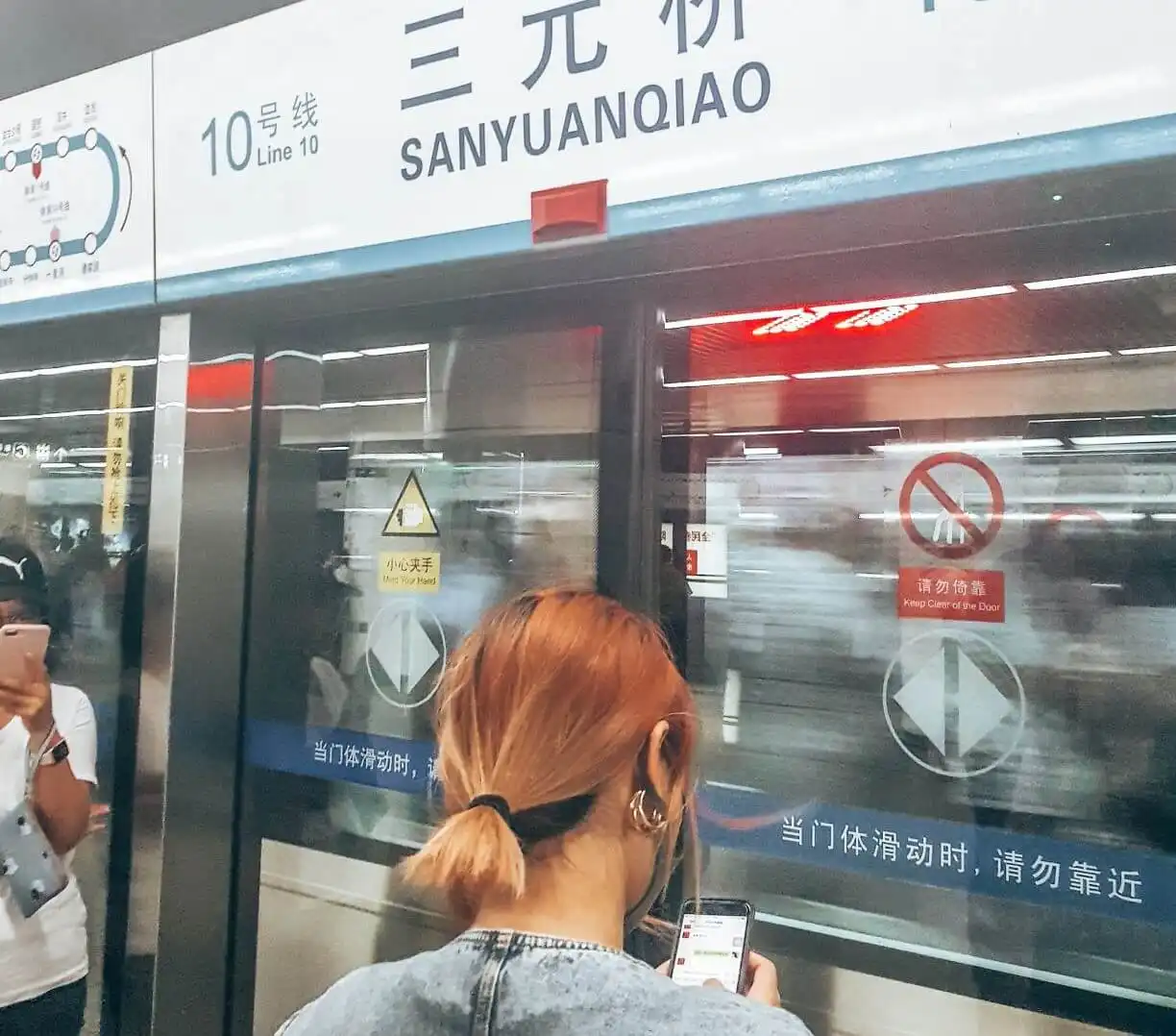
The app works all over China, so if you’re moving to other cities it’s also a real help!
Booking Train tickets in China
We are sure that this is a pretty simple process if you understand Chinese, and have a local number and ID. But for those arriving in China without these, it’s often good to book in advance through a trusted third party. We booked all our train tickets (10 of them) through China Highlights.
The service was really efficient, with a small mark up on each ticket, but they also provide email support. It’s handy to know that tickets go on sale for trains 30 days in advance and some trains can become fully booked, so just turning up at the station may not be the best idea.
What is really great is that once your tickets are booked, you’ll be able to pick them up from any station in China (it doesn’t matter what route you are taking).
The trains that we took were extremely clean, fast (we took some of the high speed/bullet trains that can go over 400km/h), on time and comfortable.
Insider tip: The train bathrooms are usually very clean but often don’t have toilet paper available, so carry some with you.
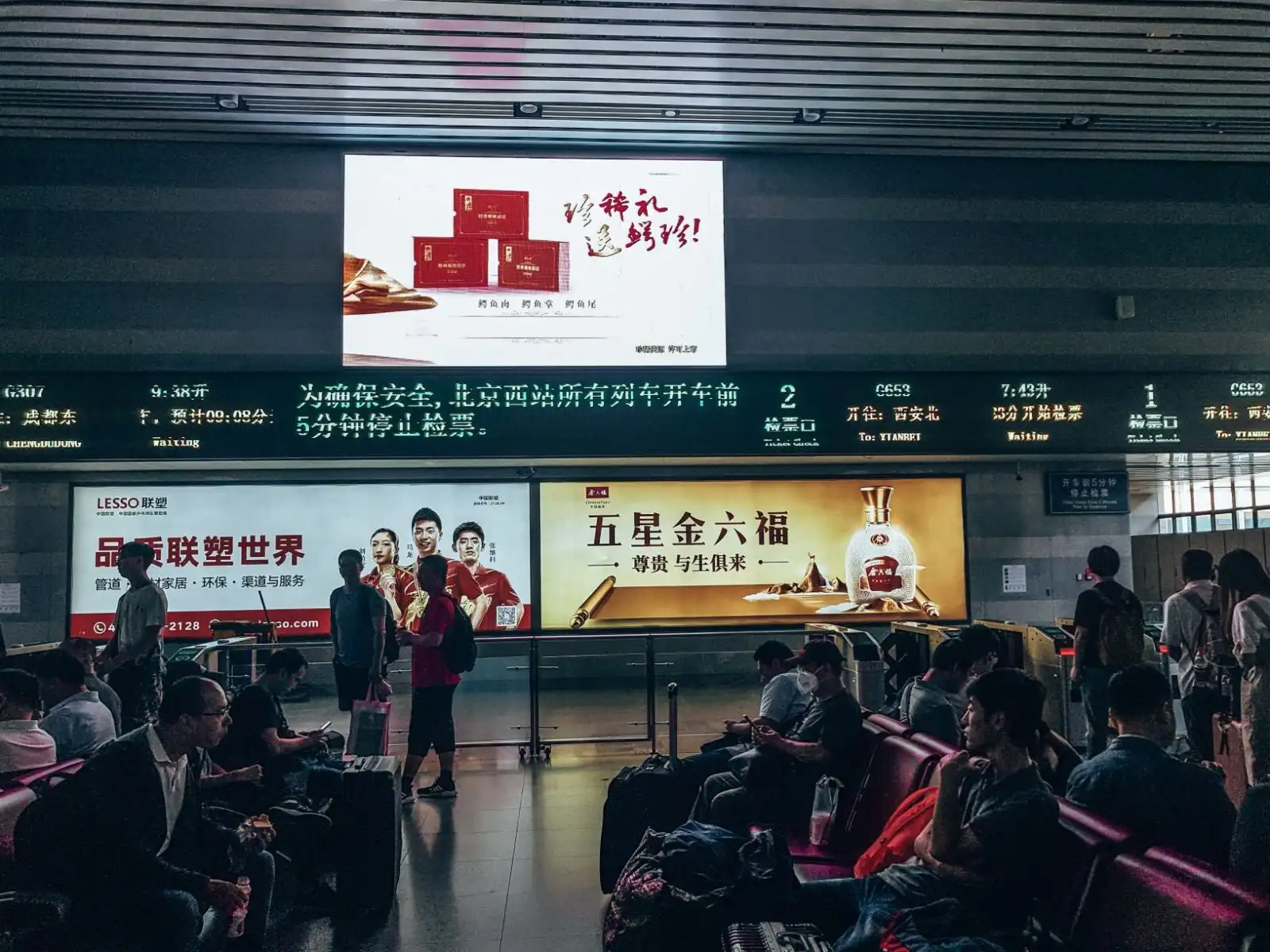
Getting a Sim Card
There are 3 main providers in China for mobile phone networks, and all offer pretty good service. However, we have been advised that China Telecom isn’t compatible with non-Chinese phones. So if you don’t have a Xiaomi or Huawei, then best go for China Unicom or China Mobile.
Ideally you should get your sim card at the airport but, if not, there are stores all over town, and generally the store assistants are really helpful in sorting out a sim card for you. But don’t forget that you need to take your passport with you to register. The cost for a sim is about 100 RMB (14 USD/ 11.50 GBP) for 30 days 10GB data, 300 minutes local calls and a bunch of SMS’s.
Must-have apps
Looking for some China travel tips? We’ve put together a list of the must-have Apps for you to download before heading to China for four days in Beijing! We even have a separate full article with an in-depth guides to what apps you need. Aren’t we helpful? ?
VPN
The most important app to install before you head to China is a VPN, we’ve experienced using both ExpressVPN and NordVPN and although both work well, we’d say that Express just pips it in terms of quality of access that you get. Without a VPN you won’t be able to access any Google email, Google maps, Facebook, WhatsApp, Instagram… you get the picture.
Click here to get ExpressVPN – it’s the world’s number 1 VPN and we personally recommend it for your trip to China!
Maps
Although Google Maps is great, our favourite route planner is Maps.me. Download offline maps, and this app provides you with your positioning throughout China.
Metro
As mentioned in the Using the Beijing metro section, the metro is amazing to use, subway stations are super clean. It’s cheap and reliable. And to help you navigate it, you must install Metro Man (Google/Apple) to help you get around town.
Social
As long as you have the VPN turned on, you’ll still be able to access Facebook, WhatsApp and Instagram, although these can be a bit slow. However, it’s definitely worth also downloading WeChat (Google/Apple). China’s answer to WhatsApp will allow you to stay in contact with people you meet in China plus you could even make payments through it, if you link your credit card.
Travel & Accommodation
So Uber (or Grab) don’t work in China, but they do have their own version – DIDI which basically works the same. If you get it from the US Apple store or the APK of the right version it’s available in English! Pretty handy…
And if you like to store all your accommodation bookings, train tickets, airplane trips into one place, then check out Tripit. This nifty little app automatically pulls in your bookings from email confirmations and then puts it all together in one trip itinerary. Win.
If you’re looking for the best accommodation options, then Agoda has to be the one for you. It has far more options than Booking.com in China.
Our favourite money planning app – Trabee Pocket – allows you to add in everything that you spend in a day, then shows you how you are doing on your daily budget. A really handy app to make sure you’re not blowing all your budget on the first couple of days…
Currency Converter
So you probably want to figure out what you’re spending along the way. We always find that XE is the perfect tool for a rough estimate on costs.
Translation
One of the most handy tools for travelling in Beijing is having a great translation app. English isn’t widely spoken and having Google Translate in your pocket will help you out immensely. Whether it’s directions, ordering the right dinner or checking something with a shop assistant before you make that purchase – this is a must.
Recommended: Hiking in Zhangjiajie National Forest – a must on any China trip.
What camera equipment and other gear do we use?
We’re living proof that you don’t need the most expensive gear to travel the world and take good photos. Here are some of our must have items that make it into the packing list for all our travels.
- Main Camera: Panasonic Lumix FZ1000
- Drone: DJI Mavic Air – Fly More Combo
- GoPro: Hero 7 Black
- GoPro Dive Case: Go Pro Housing
- GoPro Case: Smatree GoPro Carry Case – Small
- Packing Cubes: Eagle Creek Packing case
- Backpack: Osprey Farpoint 70
- Powerbank: Anker Powercore
- Phone: Xiaomi Mi 9
- Hard drive: Transcend Slim Storejet 2TB
- Laptop: Lenovo IdeaPad 720s
- Headphones: Bose Quiet Comfort 35
- Wifi Hotspot: GlocalMe G4
Useful Phrases
- Hello – nǐ hǎo
- Thank you – xiè xie
- You’re welcome – bú yòng xiè
- Yes – shi
- No – méiyǒu
- How are you? – nǐ hǎo ma?
- OK – hǎo
- Good – hǎo de
- Not Good – bù hǎo
- I’m sorry – duì bu qǐ
Frequently Asked Questions
How bad is pickpocketing in Beijing?
Like any other major international city, Beijing does suffer from a bit of petty crime, particularly pickpocketing. Our advice is to use common sense: keep your belongings tucked away, if possible use anti-theft handbag or backpack, and don’t flash cash, jewellery or mobile phones unnecessarily. If you don’t look like an easy target, you won’t become one.
Is Beijing an undeveloped city?
Absolutely not. Beijing is one of the most modern cities in Asia with sleek infrastructure, cutting-edge technology and all the amenities you would expect of a world-class city. Beijing travel is particularly modern with the trains, trams and infrastructure some of the best we’ve ever encountered.
Where can I get the best view of Beijing city?
Most rooftop bars in Beijing will give you a great view of the skyline and city laid out before you. Highly recommended is the 18th floor of the CCTV Tower where you can see this on a rotating platform if you just purchase a few drinks. In the day time, you could of course head to Jinshan Park for practically free views.
What did you think of our 4 day itinerary for Beijing? Let us know about your trip to Beijing in the comments!
Want to save it for later? Why not pin it…


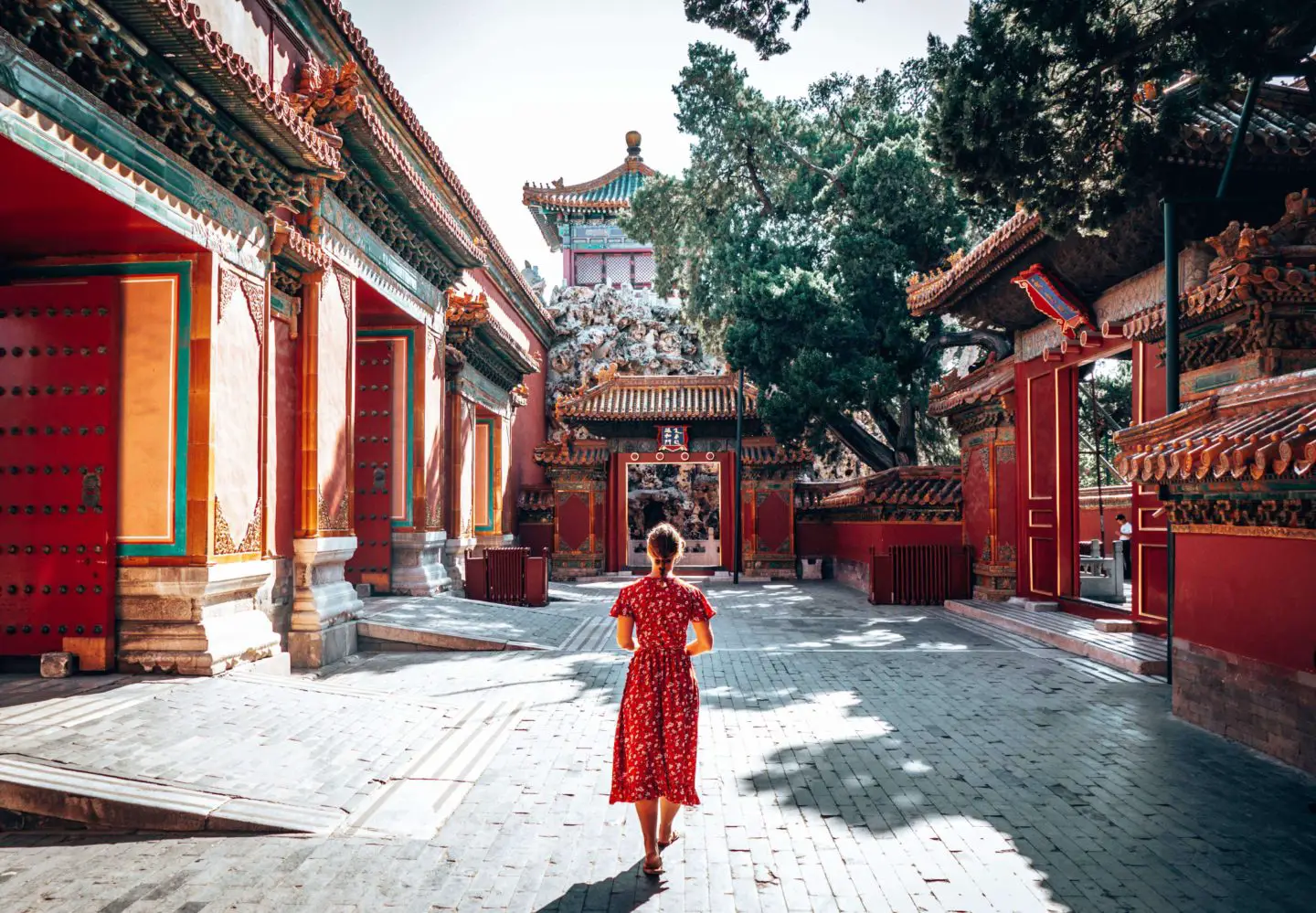
You are both doing such a amazing job in reporting on all these places and providing such handy tips to make it easier for the traveler. Also, the photos are awesome. I have been telling everyone I know about it and a couple of people said, “how do they have the time to write all of this up and provide such detail”. My answer is – “they’re young and don’t need too much sleep”.
I also saw the adorable pandas photos and videos that you sent to your mother. Now I’m starting to think about taking some of these trips. Take care and travel safe. Love, Vicki
P.S. Marianne mentioned that you have not mentioned anything about security or cautions about certain areas or times when you shouldn’t go places. To me appears that security hasn’t been an issue– is that true?
Hi Vicki, thanks so much for your positive feedback! We’re really glad that you think that our writing and the tips we are providing are useful. We’ve seen quite a bit of traffic from the USA, so thank you also for helping us to up our numbers there :).
We definitely don’t feel that young at times, like after 3 days hiking in the Zhangjiajie National Forest which we have just done (our bodies are broken!)- but it was so worth it. We actually find that the work on the website is our downtime from travelling. That may sound a bit strange but it’s sometimes good to have time on the computer and escape the travels!
The Pandas in Chengdu are wonderful. We’ll have to write a blog post on that in the near future, as they were amazing and a real bucklist moment for us. In fact, China has been one of those completely unexpected places that has provided us so many highlights. There is so much to explore here, but so little time. Our favourte has to be hiking the Great Wall though, which without doubt is the most impressive manmade building we have ever seen.
You can let Marianne know that although we are continually being cautious, and have to keep your wits about you, that we have not experienced anything in our travels to be concerned about on the security front. Overall people have been amazingly hospitable and helpful – tourism is so important to many parts of Asia that I think you’re generally safer as a traveller/tourist than many other places.